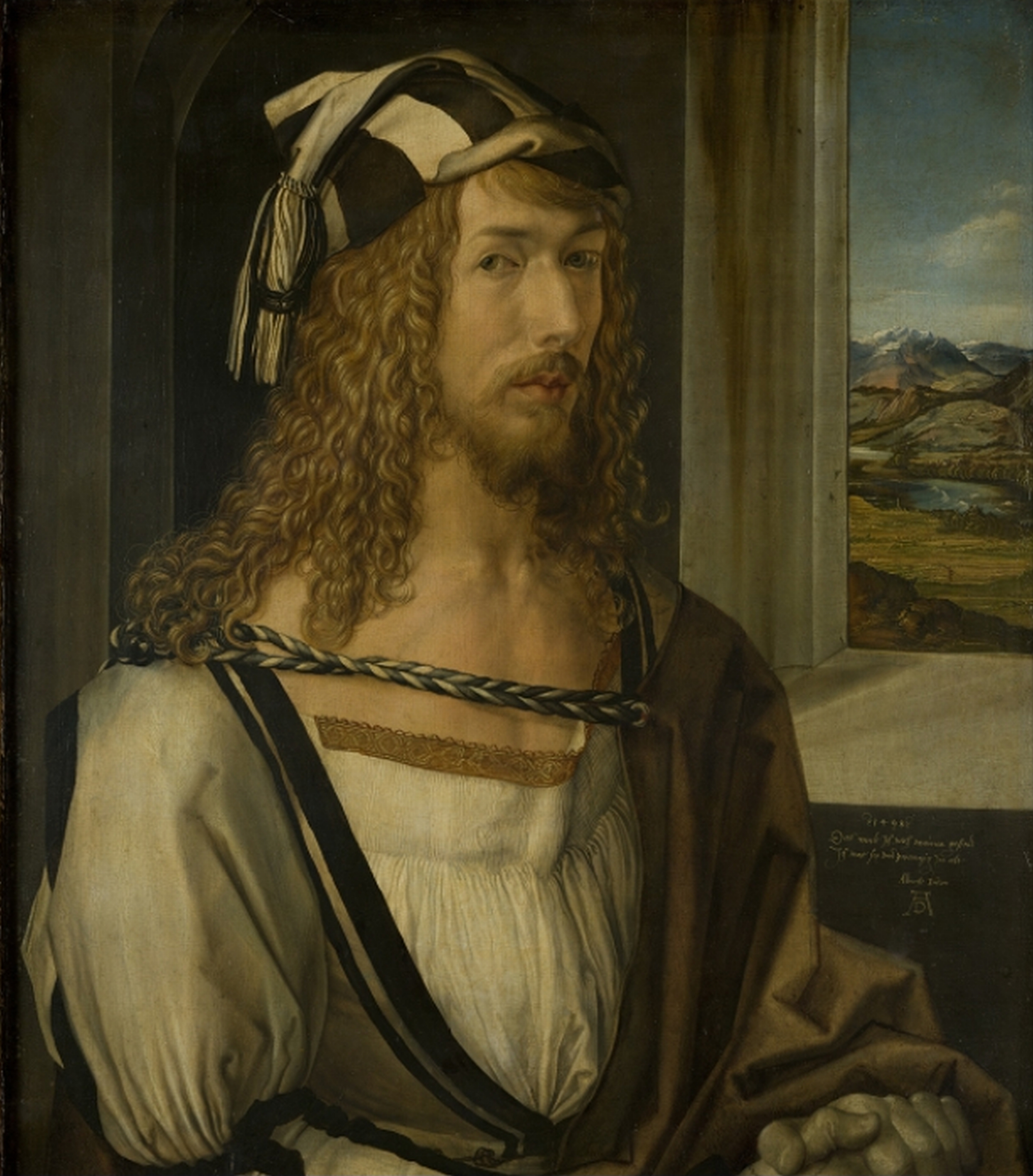Dürer was born in Nuremberg and received a typical medieval education from his goldsmith father and from the Nuremberg painter Michael Wolgemut. He was, however, one of the major transmitters of the ideas of the Italian Renaissance to artists in the North. This was the result of direct experience acquired on two trips to Italy, as well as of his own diligent study of the ideal proportions of figures and of perspective.
Dürer traveled to Venice in 1494-1495 and again in 1505-1507. While there, he became well acquainted with Giovanni Bellini, whose influence is evident in the Madonna and Child. The athletic Christ Child, the stable pyramid of the Virgin's form, the strong and almost sculptural modeling of the figures, and the contrast of clear blue and red setting off Mary's shape all recall Bellini's treatment of the same subject.
On the other hand, Mary's placement in the corner of a room with a window open on a distant view indicates Dürer's familiarity with Dutch devotional imagery. The detailed, minute treatment of the Alpine landscape and the careful delineation of all textures and surfaces remind one of Dürer's persistent fascination with the North's tradition of visual exactitude.
The Madonna and Child was probably intended for private devotion. The diminutive coats of arms in the lower corners have been identified as those of the Haller family (left) and Koberger family (right), both prominent in Nuremberg. Further, it has been suggested that the painting was commissioned by Wolf III Haller who married Ursula Koberger in 1491.
- Clinton Pittman
Tomorrow we will present the reverse of this painting! See you then! :)

![Madonna and Child [obverse] by Albrecht Dürer - c. 1496-99 - 20 5/8 × 16 5/8 in National Gallery of Art](https://img.getdailyart.com/86674/img-201802185a8959d0ef7e3)
 Albrecht Dürer
Albrecht Dürer